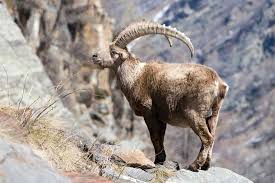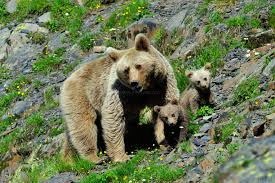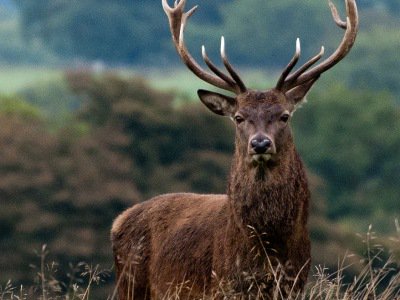Animal-watching in Armenia
Armenia is an extremely important area for migratory animals. The area of the country is also were most of the world's domesticated animals originated, including animals such as mouflon and sheep. Due to its diverse wildlife Armenia is an interesting destination for animal-watchers.
THE WILDLIFE OF ARMENIA
BEZOR GOAT

Class: Mammalia
Order: Artiodactyla
Family: Bovidae
Sub-family: Caprinae
Scientific Name: Capra aegagrus
IUCN Red List status: Vulnerable
Listed in the Red Data Book, Bezoar goat is one the most ancient inhabitants of the Armenian Highland. Bezoar goats were considered sacred animals in ancient Armenia, petroglyphs and rock paintings with their image can be found in the entire territory of Armenia. Nowadays the bezoar goat population in Armenia numbers 1000–1500 individuals.
Habitat: The typical habitats are rocky mountains with hardly accessible cliffs and sparse forests. An essential requirement is presence of dense shrubs, rocky massifs and shelters.
Distribution in Armenia: Sevan sierra (near Shorzha village), western slopes of Geghama mountain range (Khosrov State Reserve), ridges of Garni, Urts, Vardenis, Vayots Dzor, Zangezur, Bargushat and Meghri also Noravank Canyon. Isolated groups have survived on the Mt. Khustup, in Vorotan gorge and at the upper part of Arpa river valley.
Conservation: Bezoar goat is protected in Khosrov Forest Reserve, Shikahogh Reserve, Arevik National Park, Sevan National Park, Zangezur Sanctuary and some other sanctuaries in Southern Armenia.
Muflon

Class: Mammalia
Order: Artiodactyla
Family: Bovidae
Subfamily: Caprinae
Genus: Ovis
Species: O. orientalis
Subspecies: O. o. gmelini
IUCN Red List status: Vulnerable
Listed in the Red Data Book, the Armenian mouflon is an endangered subspecies of mouflon endemic to Armenian Highland. The Armenian mouflon can be found also in Iran, southwards to the Lake Urmia and Nakhchivan. Nowadays the mouflon population in Armenia does not exceed 250–300 individuals.
Habitat: Mountains steppes where juniper, almond tree and other xerophyll plants are grown (Urts mountain range), subalpine and alpine meadows (Vayots Dzor and Syunik provinces). Lives in rocky areas and canyons at 1000–3000 m above sea level. Mouflons are residents in Armenia.
Distribution in Armenia: Urts mountain range (Ararat Province), Vayots Dzor Ridge (Aghavnadzor, Khndzorut, Martiros and Bardzruni villages), Bargushat and Zangezur mountain ranges (to the south of Dastakert town).
Conservation: The Armenian mouflon is protected in Zangezur Sanctuary and Arevik National Park.
Brown bear

Class: Mammalia
Order: Carnivora
Family: Ursidae
Genus: Ursus
Species: U. arctos
Subspecies: U. a. syriacus
IUCN Red List status: Least Concern
Brown bear is listed in the Red Data Book of the former USSR. Brown bear is spread in Eurasia and North America. Population size is unknown, but apparently stable.
Habitat: Inhabits in sparse forests, broadleaf forests, mountain grasslands, subalpine and alpine meadows. Availability of fruits, berries and nuts is an important factor of bear distribution.
Distribution in Armenia: Occurs in the Ararat, Vayots Dzor, Syunik, Tavush, Lori, Kotayk and Gegharkunik provinces. Sometimes penetrates to the Shirak and Aragatsotn provinces. Bears can be found on the territory of Geghama mountains Ukhtasar, Khosrov Reserve, distant forests of Artsakh, Shikahogh reserve, Dilijan National Park, and sometimes on the slopes of Aragats and Ara mounts. Recorded from elevations 400–500 m up to 3000 m above sea level.
Leopard

Class: Mammalia
Order: Carnivora
Suborder: Feliformia
Family: Felidae
Subfamily: Pantherinae
Genus: Panthera
Species: P. pardus
Subspecies: P. p. tulliana
IUCN Red List status: Endangered
The Leopard is one of the most endangered species living in the Caucasus. This leopard subspecies can be found in the South Caucasus countries, Turkey, Iran, Turkmenistan and Afghanistan. Armenia probably has less than 10 individuals.
Habitat: Its habitat consists of subalpine meadows, broadleaf forests and rugged ravines from 600–3,800m in the Greater Caucasus, and rocky slopes, mountain steppes, and sparse juniper forests in the Lesser Caucasus and Iran.
Distribution in Armenia: The Caucasian leopard’s territory in Armenia reaches from mountainous regions in the south starting with Khosrov National Reserve to Shikahogh State Reserve, Zangezur Sanctuary and Arevik National Park. There is still some hope that at least several of these animals remain in other areas like distant forests of Nagorno-Karabakh.
Deer

Bore

